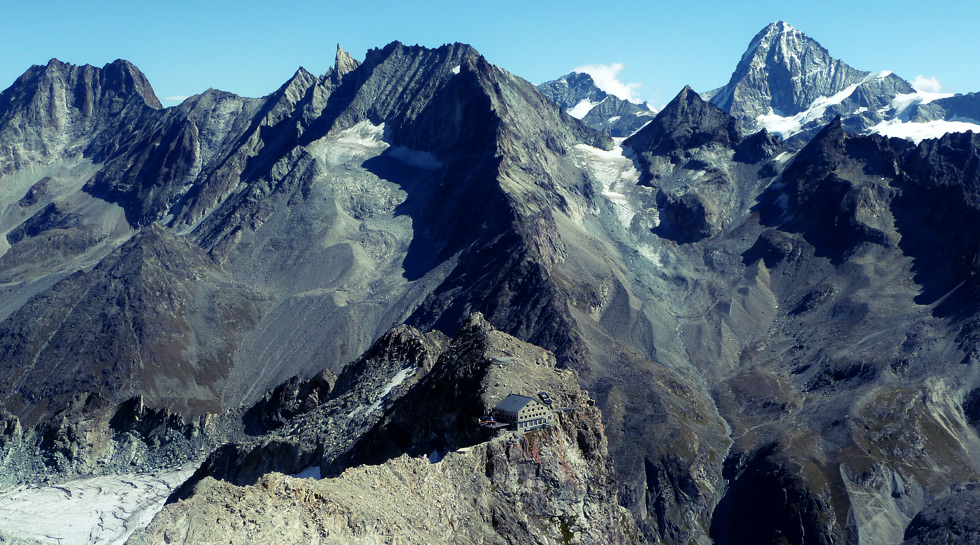Crux, in mountaineering, has a specific meaning but in reality it is simply a term of art which has evolved whilst still mirroring its original definition. Two of the final three days, for us, would be crux days - the most difficult. Each had challenges and decisive points towards which we had been working over the months of preparation and the eight days of trekking that preceded our leaving the Dix Hut in the early hours of 30th September 2011.
In bed, I stare for much of the night at the ceiling of the small dortoir we have to ourselves. I am secluded in a corner but my sleep is patchy and capricious. This restlessness is as a consequence of Cheyne Stokes breathing and the story we were earlier told of a fall by a guided group on La Serpentine yesterday, the precise route we intend to take. The former, a function of the altitude, means I wake up and have to will myself to take deep, frayed pants to calm my lungs. At the Chanrion Hut, I was unnerved but now I just want to get back to sleep. The fall on La Serpentine is something different. Alpinism is not a carefree undertaking - it can be dangerous. I had thought I understood but the accident threw into stark relief the primary issue involved in responsible alpinism - know the people you are roped to. In the end, if one of you falls, you all fall. Nothing will stop you on a glacier so when you ask, as I once did, what you do in event of a fall - the answer is simple: don’t fall.
I rise early. Everything I need is within easy reach for the morning and everything else is packed. By 4.30am I am eating breakfast and by 5am and I am outside the Dix hut, in my harness and shrugging on my pack. The atmosphere is circumspect. For the first part of the ascent, I have stowed my camera and GPS. Now is not the time for distractions - now is the time for assiduous, single-minded concentration. In the early morning half-light, clambering over boulders onto the Glacier de Cheilon, the tension is palpable. A barked rejoinder when one of us flashes another in the face with a head torch betrays the mood. We rope up quietly, checking and re-checking equipment. I gaze up at the ascent and run the permutations through in my head. In reality, good technique is all that is needed here - this is not a technical route. As we move off, I vary between American and French as needed, every movement calculated. The weather is perfect - not a cloud in the sky and little in the way of wind. From time to time, I steal glances at the panorama surrounding us and, in truth, this is without any doubt one of the most thrilling, inspiring days I have spent in the mountains.


















